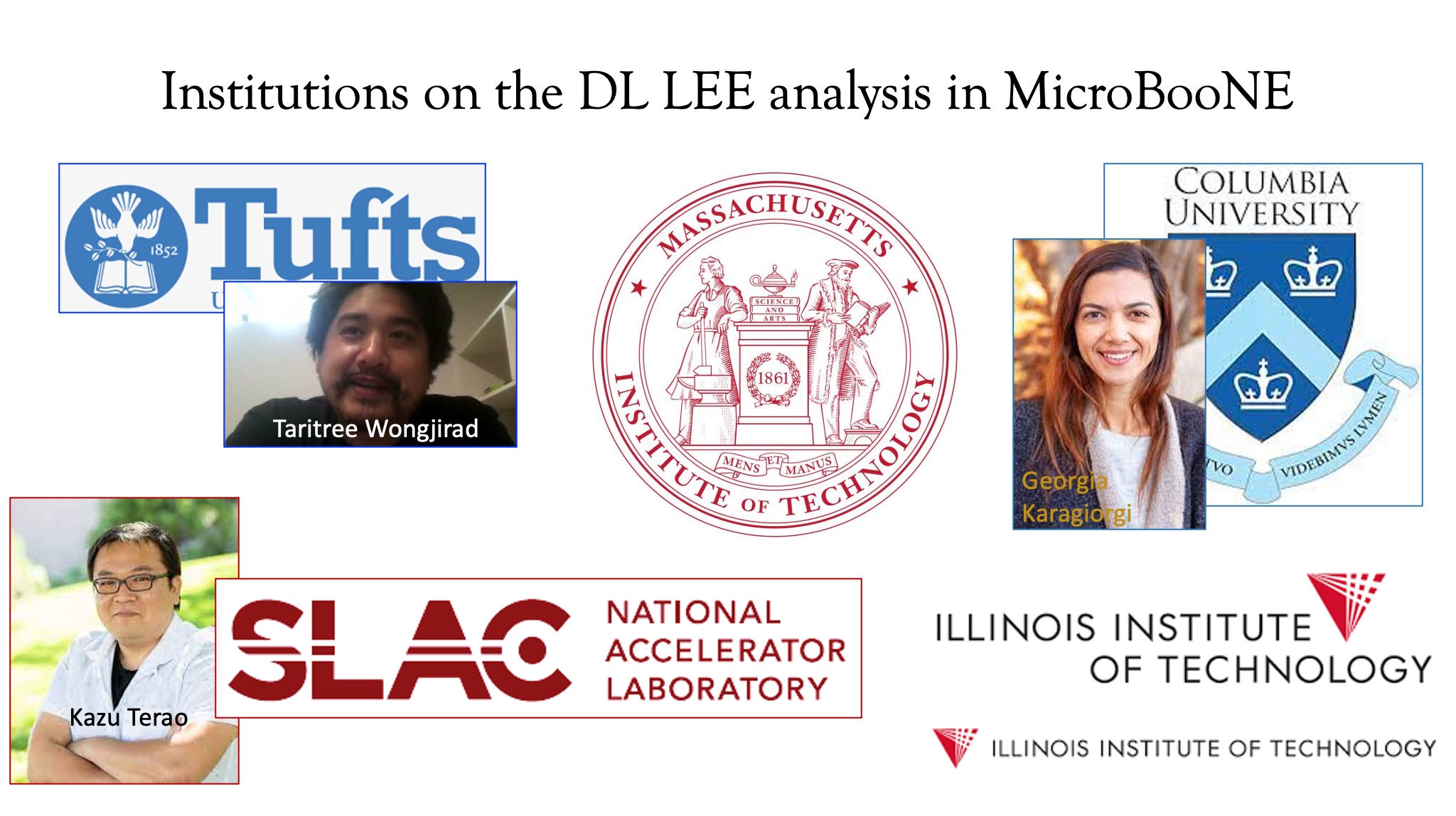Please see the offical website for more information about the experiment, including talks, papers, and news items.
MicroBooNE is a state-of-the-art 170 ton liquid argon time projection chamber (LArTPC) experiment which will run in the Booster Neutrino Beamline at Fermilab in 2015. This experiment represents an important step in establishing LArTPC technology in the United States.
MicroBooNE will investigate a wide range of physics, including:
- The MiniBooNE low-energy excess of νe events reported in neutrino mode, as well as the excess seen at low and intermediate energies in antineutrino mode. The MIT group are especially interested in electron-like sources of this excess. We have been involved in developing phenomenology which might explain these events. For more info, click here.
- New searches for exotic particles (like sterile neutrinos) and even more exotic physics (like Lorentz violation)
- Measurements of neutrino cross sections on argon crucial to future oscillations and proton decay experiments.
- A precise measurement of the spin carried by the strange quarks in the proton. This has interesting implications for spin-dependent dark matter searches.
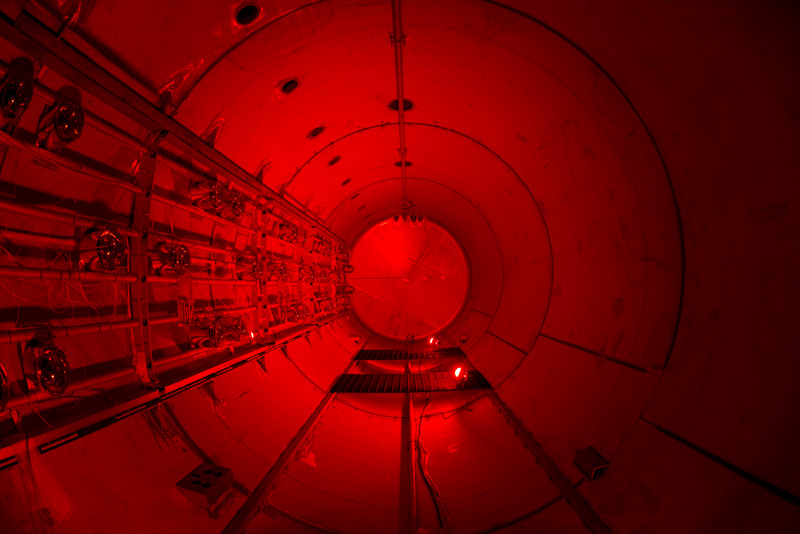
How does it work?
The TPC has three wireplanes, with a total of 8256 channels, and an optical system with 32 8-inch cryogenic photomultiplier tube (PMT) assemblies. MIT constructed the optical system, shown in the photograph above illuminated by red light to keep the PMTs quiet. These systems are contained within a cryostat filled with liquid argon and will be used to provide information about the energies and flavors of the incident neutrinos.
Neutrino interactions in liquid argon can produce charged particles. These particles then free ionization electrons as they move through the liquid argon in the detector. The free electrons are then drifted to one side of the detector using an electric field, where they will meet the three wireplanes. The voltage induced on these wires by the electrons can then be used to reconstruct a 3D image of the event. Thus, bubble-chamber quality event readout can be achieved.
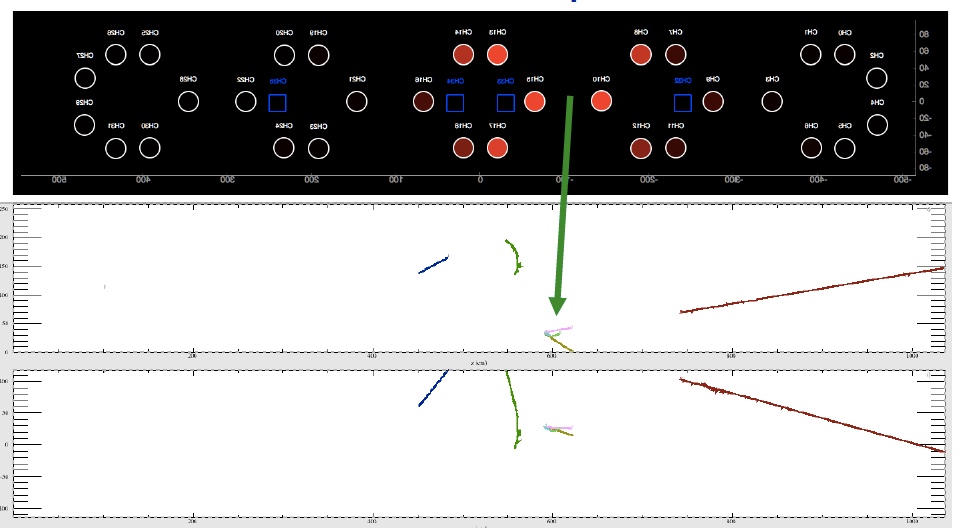
Scintillation light and Cherenkov light are also produced. The PMT system, for which MIT is responsible, detects this light and forms the event trigger. The position and timing information allows the neutrino event to be identified even in the presence of cosmic rays, as shown above. The scintillation light is emitted at 128 nm and so must be shifted to the visible before detection with cryogenic PMTs. In order to achieve this, we use acrylic plates coated with tetraphenyl butadiene (TPB), a wavelength shifter which absorbs light from different wavelengths and emits it in the visible spectrum with a peak wavelength of 425 nm. These plates are fixed in front of the 8-inch PMTs, which are held loosely in position with a mount. The PMT system is working well and we are now involved in calibration of the system.
The information about neutrino interactions gleaned from the charge collection and light collection systems will then be analyzed in order to investigate the physics goals stated above.
For a fun description of how the TPC was installed, see this
writeup by Ben Jones.
Our Contribution to Analysis: Deep Learning
Deep Learning is a newly developing branch of machine learning. This is a fast-growing area of computing research that is being applied in areas as diverse as teaching computers to play the game Go, performing facial recognition, and allowing the Google self-driving car to navigate its surroundings. With Deep Learning, the we provide examples of correctly identified MicroBooNE events, and the computer learns from these, optimizing a general algorithm to allow it to do event identification with high accuracy.
Here is an example of applying Deep Learning. On the left (a) is the
information from the LArTPC. On the right (b) is what Deep Learning says
is in the image. HIP=highly ionizing particle (a proton),
MIP=mininum ionizing particle (muon), and shower is an electromagnetic
shower (an electron):
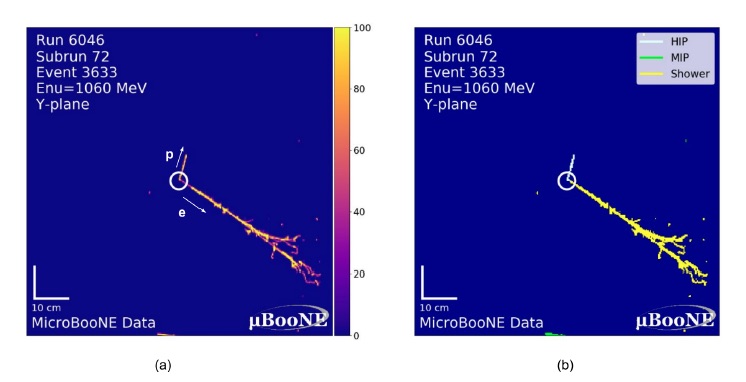
Watch Taritree Wongjirad's Pappalardo Symposium Talk on Deep
Learning in MicroBooNE here!
Here is the MIT Research Group, Past and Present, on MicroBooNE:
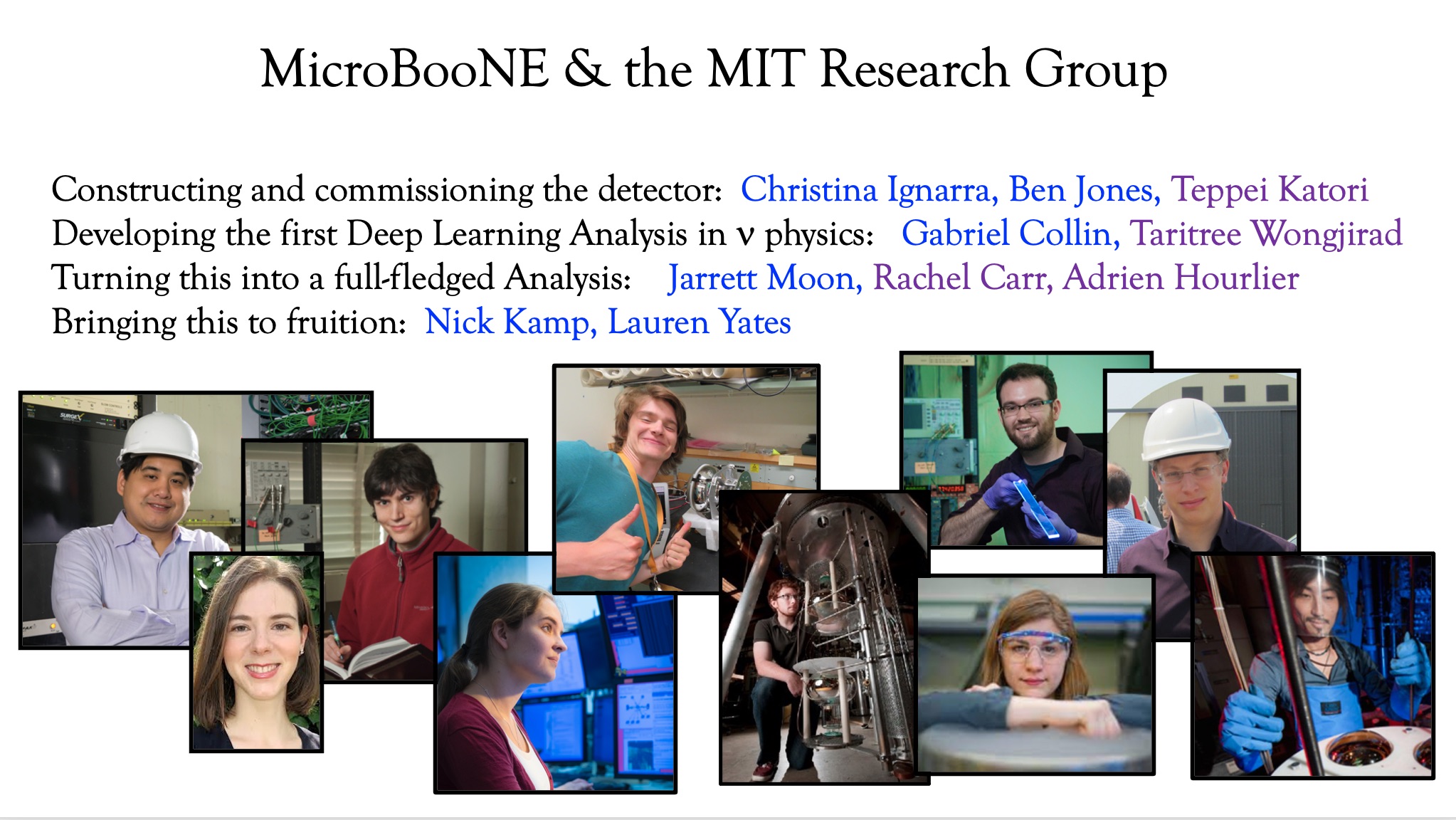
We were joined in the Deep Learning Analysis by other groups,
several led by past MIT Neutrino group members, shown below:
